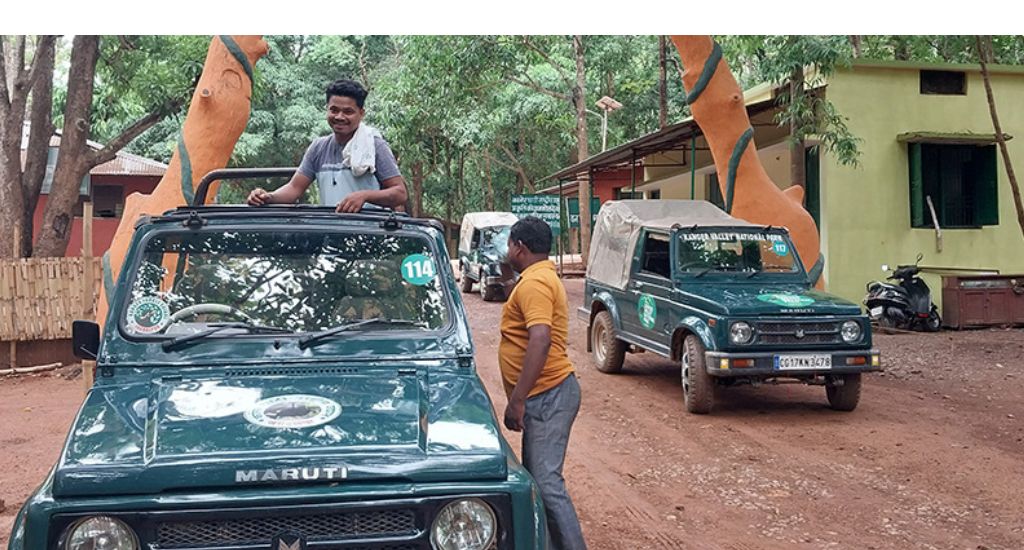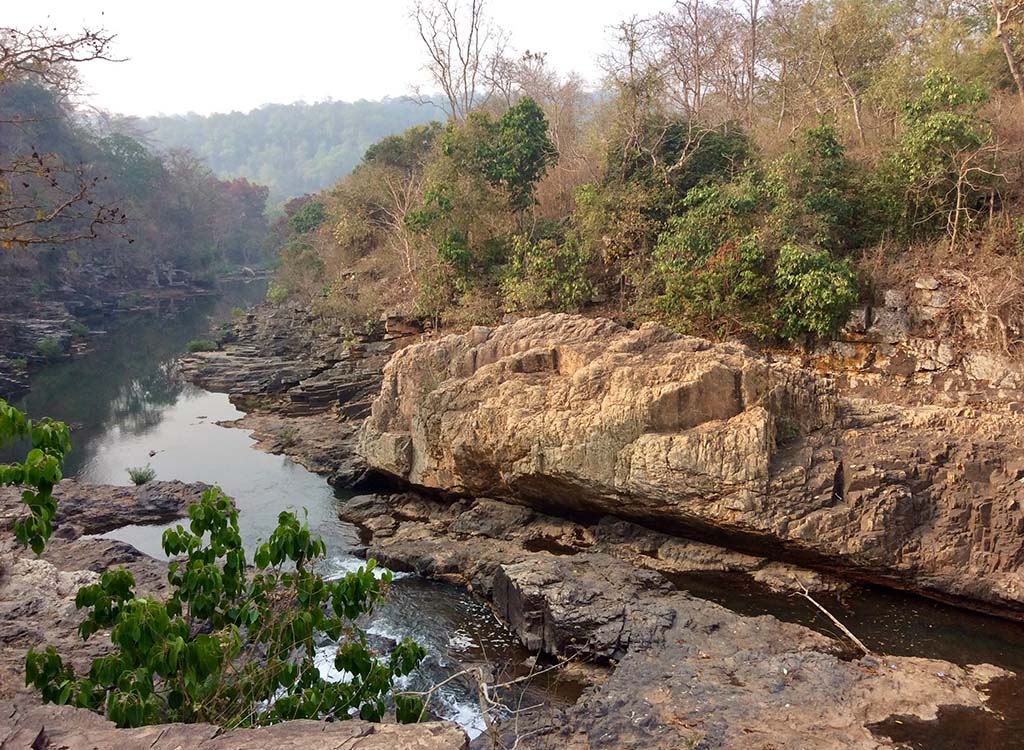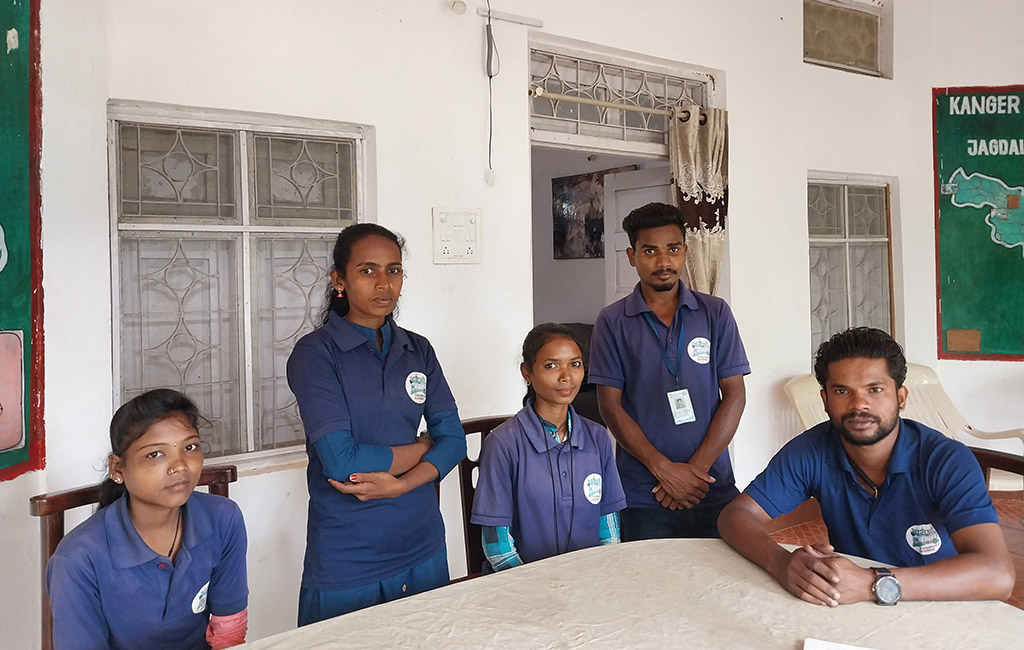
Safaris drive up Bastar tourism
A group of Chhattisgarh youth invest in sports utility vehicles to offer safari rides inside the Kanger Valley National Park, gaining an income and boosting tourism in Bastar.

A group of Chhattisgarh youth invest in sports utility vehicles to offer safari rides inside the Kanger Valley National Park, gaining an income and boosting tourism in Bastar.
As tourists stand enthralled by water cascading over the dramatic black layered rocks of the Tirathgarh waterfall, Dinesh Kumar Pandey, who drove them to see it, looks on with a contented smile.
A resident of Maulipadar village, about 3 km from the Kanger Valley National Park, Pandey has become a paid safari driver thanks to the forest department’s safari initiative.
Once a Naxal stronghold, Bastar is opening up to ecotourism – the Kanger Valley being famous for its Kotumsar limestone caves and the dramatic Tirathgarh waterfall.
Though there are no tigers, elephants or other grand animals, the Kanger Valley is a nature lover’s paradise. It is rich in biodiversity and the cave is popular for its icicle-shaped stalagmites and stalactites formations.

Hoping to capitalize on this, in 2017 Bastar’s forest department created a nature safari initiative helping locals to buy sports utility vehicles to give safari tours.
A revolving fund of credit was established for loans at just 4% interest to buy the vehicles. Twenty-three drivers from surrounding villages bought vehicles for safaris and formed the Eco Vikas Samiti (Eco Development Group) venture.
“Everyday there are at least two trips for each driver. In November and December, when the place is packed with visitors, a driver even runs five trips daily. Normally, six people are at the back with a guide in front,” said Pandey.
The trips last two to three hours. The sports utility vehicles, costing Rs 9 lakh each, move according to a serial number to ensure every driver gets a turn.
Driver Kaushal Thakur admitted there was initial hesitation about the tourists’ response. So the initial route chart included Kotusmar cave which is high on the tourism list.

Safari rides cost Rs 1,500 for the entire vehicle and the guide charges Rs 150. If visitors want to view Tirathgarh waterfall, they pay Rs 300 extra.
The profit annually stands at about Rs 1 lakh for each vehicle. During the pandemic as vehicles did not run, no EMI deductions were made.
“About 80% of the loans have been cleared,” said Kanger Valley director Dhammshil Ganvir.
Though the drivers enjoy a regular income, the vehicles need frequent repairs as they run long distances. Not only is servicing necessary at the start of the season to ensure a smooth run, vehicle maintenance can cost Rs 40,000-50,000 annually and the nearest garage is 30 km away.
Despite these costs, for Munna Baghel the safari means decent income.

“I used to click photos of forest officials who came to Tirathgarh. Then a ranger told me about the safari service. While some of us were keen on nature, others liked wildlife. It helped us come together and form the samiti,” he said.
The drivers are happy that the director, Ganvir, has changed the park season.
Earlier, the national park used to be open between November 1 and June 15. But starting this year it will open on October 1, meaning the drivers will get an extra month of work. In the three months off-season, the drivers take up farming.
“Most safaris happen from November to January,” Pandey told Village Square.

Though towards the end of the season, more people visit the Kotumsar – sometimes over 50 people are inside the cave at one time.
Apart from the safari drivers, local people like Lachhu Mohore make good money as guides. Earlier, Mohore used to roam the forest, showing people interesting sights to earn a few bucks. Now he gets Rs 150 per trip as a fixed charge and makes Rs 4,000-5,000 during the peak months.
At the Tirathgath waterfall, the Amcho Bastar Paryatan Vikas Samiti, a group of 30 local youth, tends to tourists’ needs and engages in regular cleaning. The youth earn based on the income from tourism.
Pitambar Thakur, who used to work in a telecom company, is now part of the Amcho Bastar (Our Bastar) initiative started by the district administration at various tourist spots.

Girls like Khemeswahri Thakur and Manita Nag are also part of this initiative.
Most of the youth have studied up to class XII. They are then trained in etiquette for three months.
Tirathgarh has seen an upsurge in visitors. In 2020, there were 53,108 tourists. The number of visitors increased by nearly five times in 2021. In 2022 more than a lakh tourists visited, according to travel start-up Unexplored Bastar.
Ten new vehicles will be added so that safari drives can start from the park’s other entrance at Koleng.
As villages are involved in eco-tourism, positive changes are happening. There is a focus on rural electrification and solar-powered drinking water supply.
Before the launch of the safari initiative, the forest department had urged many youth to join the samiti by depositing Rs 1 lakh each. Now, more men want to join the group as tourism is soaring.
The lead image shows sports utility vehicles ready for a safari in the Kanger Valley National Park (Photo by Deepanwita Gita Niyogi)
Deepanwita Gita Niyogi is a journalist based in New Delhi.